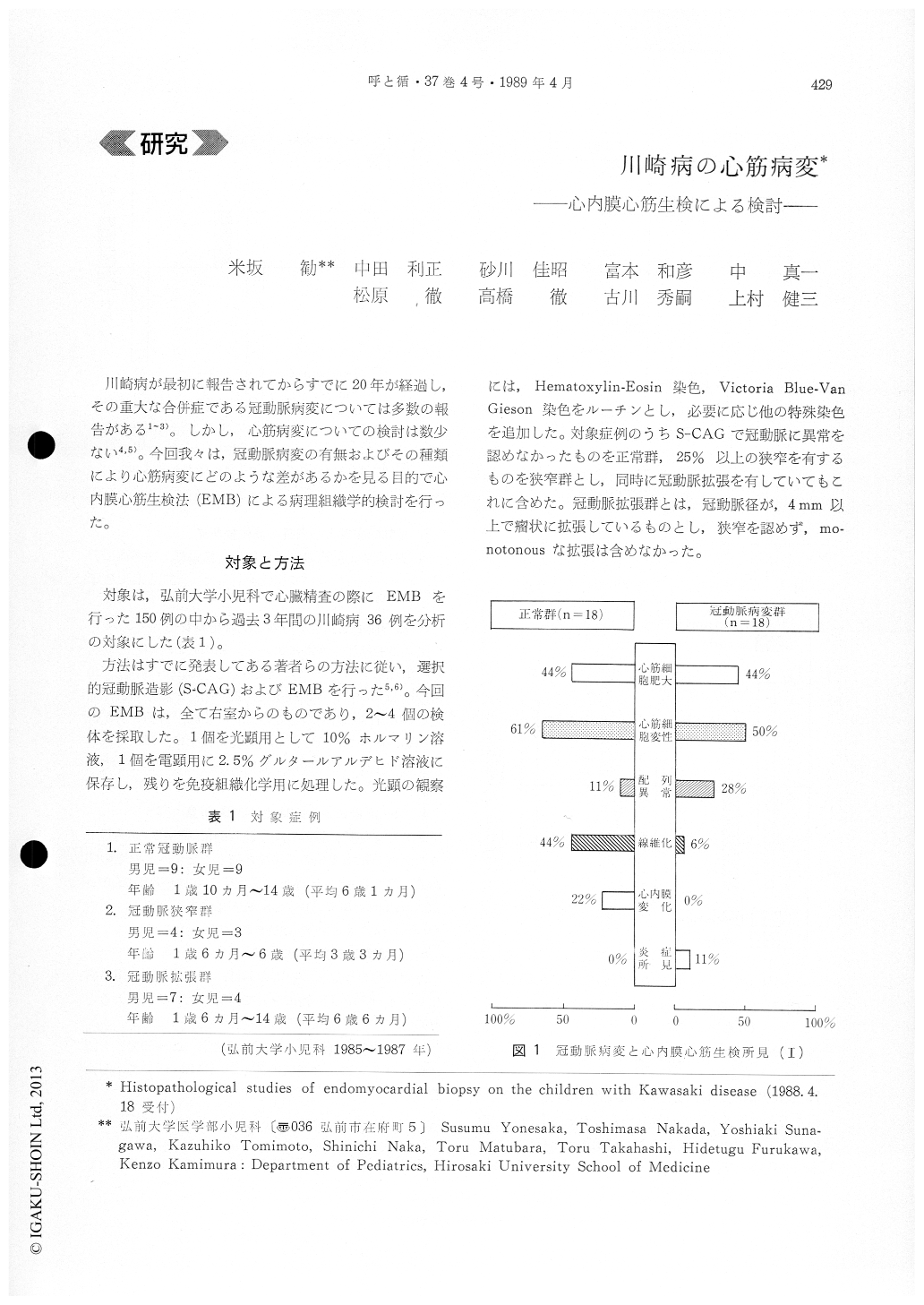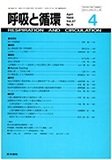Japanese
English
- 有料閲覧
- Abstract 文献概要
- 1ページ目 Look Inside
川崎病が最初に報告されてからすでに20年が経過し,その重大な合併症である冠動脈病変については多数の報告がある1,3)。しかし,心筋病変についての検討は数少ない4,5)。今回我々は,冠動脈病変の有無およびその種類により心筋病変にどのような差があるかを見る目的で心内膜心筋生検法(EMB)による病理組織学的検討を行った。
Since there has been many reports on the coronary artery lesions in the patients with Kawasaki disease, but only a few reports on histopathological investiga-tion employing endomyocardial biopsy, histopatholog-ical study was performed in eighteen children of Kawasaki disease with coronary artery lesions and eighteen children of Kawasaki disease with intact coronary artery, aged from one year and ten months to fourteen years. There were twenty males and sixteen females.
Comparing Kawasaki disease who had coronary artery lesions with those not, there was no striking difference in histologic findings. Kawasaki disease without coronary artery lesions revealed myocellular hypertrophy, degeneration of myocytes, disarray, interstitial fibrosis and endocardial changes in 44%, 61%, 11% and 44%, respectively.
Among Kawasaki disease who had coronary artery lesions, children with coronary artery stenosis showed a higher incidence of histological abnor-malities than those with coronary artery aneurysm. Some cases of Kawasaki disease were recognized to have significant myocardial abnormalities even in three to six years after onset, which seemed to persist whether or not they would have coronary artery lesions. Since Kawasaki disease who would have myocardial damages might have the potential for developing cardiomyopathy, careful attention should be payed to myocardial lesions as well as sequelae of coronary artery lesions.

Copyright © 1989, Igaku-Shoin Ltd. All rights reserved.


